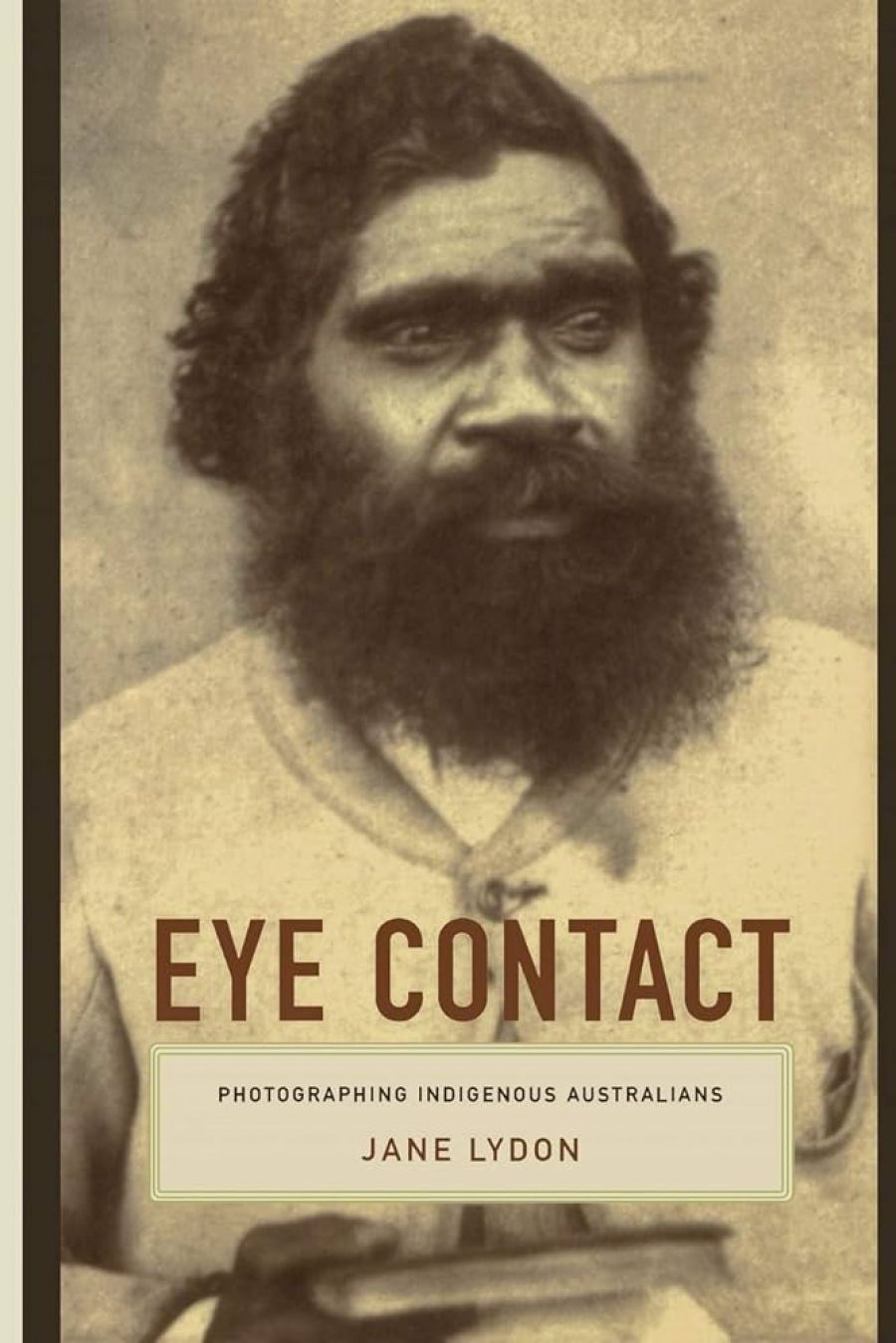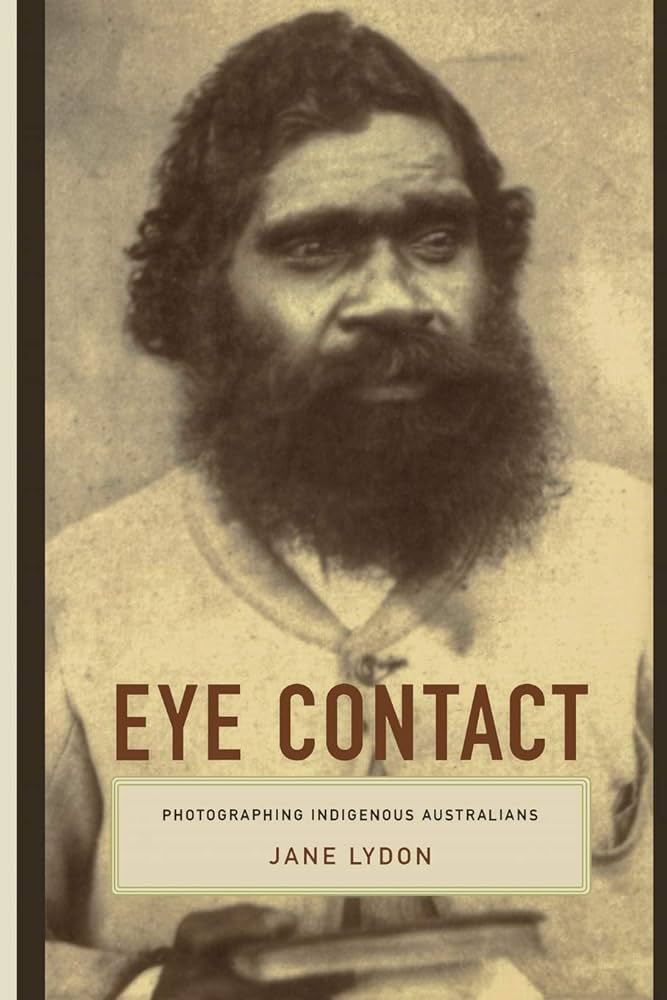
- Free Article: No
- Contents Category: Photography
- Review Article: Yes
- Article Title: Consensual circumstances?
- Online Only: No
- Custom Highlight Text:
There is a recuperative basis to Jane Lydon’s project that the measured tones of academic writing cannot disguise and that gives this book its energy. Lydon’s subject is the Coranderrk Aboriginal Station near Healesville, which was established in the 1860s in what Lydon describes as ‘consensual circumstances’. In the first decade of operation, the Aboriginal residents at Coranderrk achieved an un-characteristic and impressive degree of autonomy. Under the sympathetic management of John Green, there was, Lydon argues, ‘space for Aboriginal objectives and traditions to co-exist with newer practices’. As an early, initially successful expression of Aboriginal self-determination, Coranderrk has already attracted much scholarly attention, but Lydon takes a new tack, examining the extensive photographic archive created during the Station’s first forty years (it closed in 1924).
- Book 1 Title: Eye Contact
- Book 1 Subtitle: Photographing Indigenous Australians
- Book 1 Biblio: Duke University Press, $23.95 pb, 303 pp
- Book 1 Cover Small (400 x 600):

- Book 1 Cover (800 x 1200):

Coranderrk has a significant claim when it comes to Australian photographic history: more photographs of Aboriginal people were produced there than anywhere else in Australia. Furthermore, the quality of the photographs is uniformly high due to the involvement of practitioners who were pre-eminent in their field. However, Coranderrk’s reach extended far beyond Australia, with works by local and international photographers being circulated widely overseas in exhibitions and scientific publications. The main context for their dissemination was the scientific debate about human evolution triggered by Darwin’s theory of natural selection and the interest in ‘racial types’.
The fortunes of the Coranderrk Station were charted in detail by Charles Walter, Fred Kruger, Nicholas Caire and other photographers. In the 1860s and 1870s, when the concerns of the humanitarians were most influential, the photographs expressed optimism about the Aboriginal residents’ adaptations to the civilising process. Images of hop farming and the orderly settlement extolled the virtues of industriousness and tidiness. Kruger’s well-known early photographs evoked an Aboriginal, Christianised and rural arcadia. In the 1880s, however, assimilationist programs were introduced and the community lost its powers of self-determination. From that point on, Coranderrk functioned as a showplace where the remaining ‘full-blood’ Aboriginal residents were presented as relics of a dying race.
One of the book’s most sustained discussions deals with the contribution of Charles Walter, whose compelling portraits of Aboriginal people were exhibited at the Intercolonial Exhibition in Melbourne in 1866. In Walter’s work, Lydon seeks confirmation of the subjects’ agency, their autonomy and control. She argues that they were fully aware of the codes of visual representation and used them to their own advantage, mirroring the sophisticated political strategies they deployed in running the community.
The documentary evidence for this viewpoint is scant. Coranderrk residents covered the walls of their huts with pages from illustrated newspapers that probably included their own photographic portraits, and in some instances they are known to have controlled the terms of the photographic transaction. Regarding the latter, French photographer Désiré Charnay obtained only a few images on his visit to the Station in 1878 because of the rapid escalation in the fee charged by his potential subjects – from five shillings to ten, to twenty, upon which, in Charnay’s own words, he ‘sent them to the devil’.
Then there are the photographs themselves. It is here that Lydon’s analysis proves most problematic, for, as she observes, photographs are polysemous. Thus, photographs could have very different meanings for Aboriginal and European viewers, symbolising rights to the land or signifying progress. And context does of course change meaning; even Walter’s ‘sympathetic’ portraits operate within the colonial and scientific discourse about race and the inevitable extinction of Aboriginal people.
Personally, I remain unconvinced by Lydon’s central thesis that Aboriginal people at Coranderrk ‘actively used the camera to express their own values’. While there is certainly evidence of cooperation, the matter of collaboration is far more vexed. Lydon uses the notion of theatricality as proof of the subjects’ control over their visual representation, but theatricality is not unusual in colonial photography (the performative aspects of Captain Samuel Sweet’s work immediately comes to mind). Theatricality, of itself, is not necessarily indicative of the photographer’s lesser power.
Where Lydon succeeds admirably is in highlighting the complexity of the exchange between colonial photo-grapher and Aboriginal subject, and in making it clear that the relationship between observer and observed was probably far more dynamic and intimate than is often admitted.
Eye Contact has some minor failings: photography’s ‘antipodean inception’ was not 1846, as stated in the first sentence, but 1841; the inclusion of dates in captions should be standard practice; and the title is overly general given the book’s tight focus on Coranderrk. However, the book’s strength lies in its recuperative acts, on behalf of the subjects represented in the photographs and the photographs themselves. The Coranderrk photographs have assumed a vital role in contemporary culture, providing descendants of the original residents with material evidence of familial connections and demonstrating continuous connections to land. The importance of these ties is borne out by the purchase of the former station by the Aboriginal community in 1998.
Eye Contact is based on Jane Lydon’s doctorate at the Centre for Cross-Cultural Research at ANU. It is a thoroughly researched and thoughtful contribution to the ongoing discussion about photographing indigenous Australians.


Comments powered by CComment